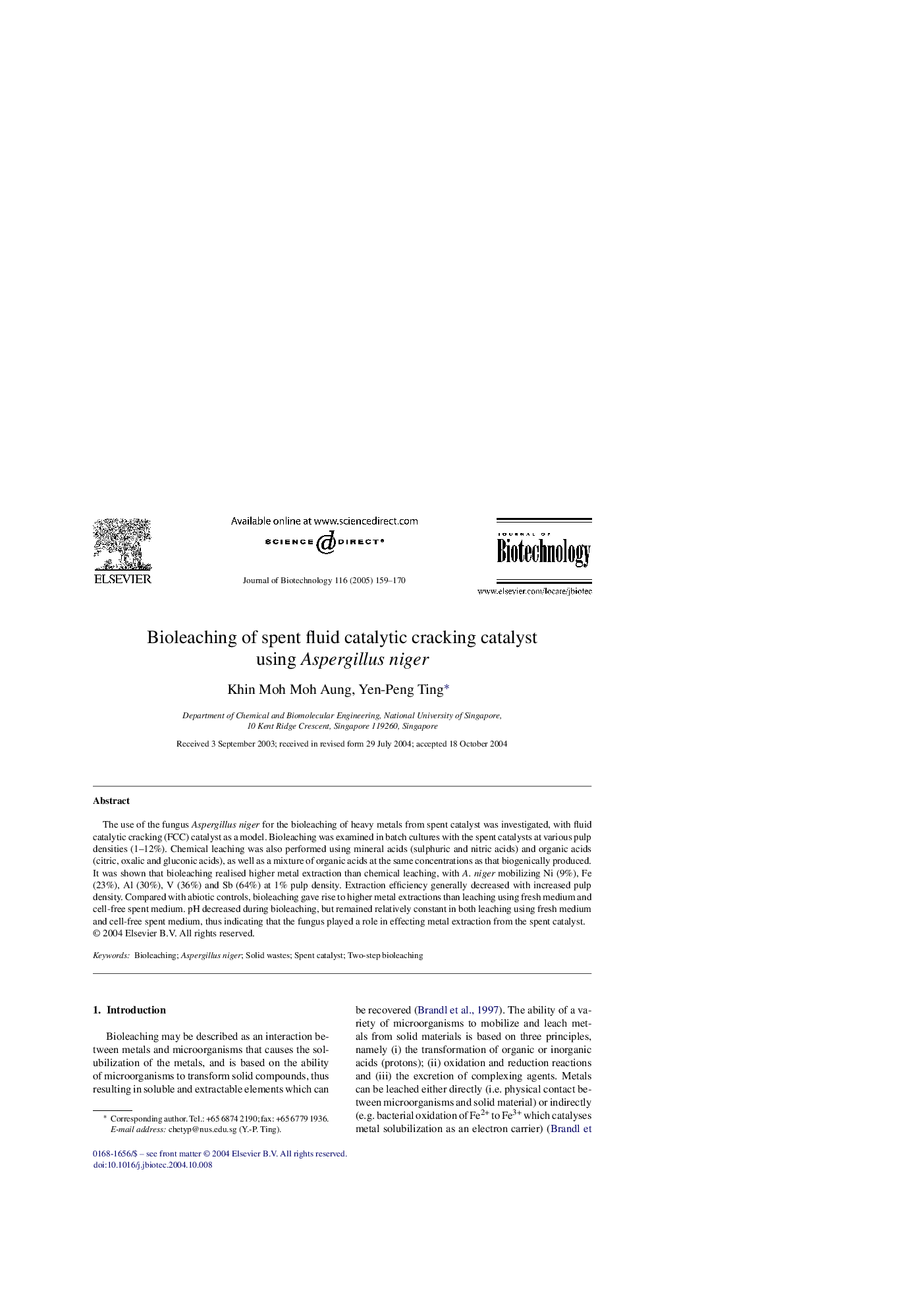| Article ID | Journal | Published Year | Pages | File Type |
|---|---|---|---|---|
| 9604445 | Journal of Biotechnology | 2005 | 12 Pages |
Abstract
The use of the fungus Aspergillus niger for the bioleaching of heavy metals from spent catalyst was investigated, with fluid catalytic cracking (FCC) catalyst as a model. Bioleaching was examined in batch cultures with the spent catalysts at various pulp densities (1-12%). Chemical leaching was also performed using mineral acids (sulphuric and nitric acids) and organic acids (citric, oxalic and gluconic acids), as well as a mixture of organic acids at the same concentrations as that biogenically produced. It was shown that bioleaching realised higher metal extraction than chemical leaching, with A. niger mobilizing Ni (9%), Fe (23%), Al (30%), V (36%) and Sb (64%) at 1% pulp density. Extraction efficiency generally decreased with increased pulp density. Compared with abiotic controls, bioleaching gave rise to higher metal extractions than leaching using fresh medium and cell-free spent medium. pH decreased during bioleaching, but remained relatively constant in both leaching using fresh medium and cell-free spent medium, thus indicating that the fungus played a role in effecting metal extraction from the spent catalyst.
Related Topics
Physical Sciences and Engineering
Chemical Engineering
Bioengineering
Authors
Khin Moh Moh Aung, Yen-Peng Ting,
